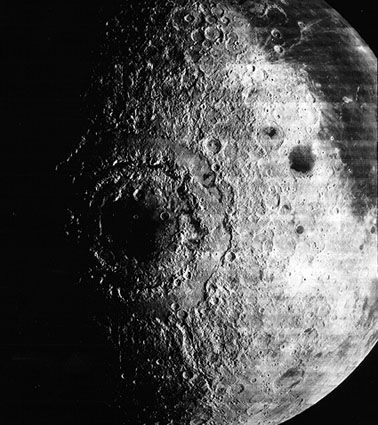Our understanding of the Moon would have advanced much faster if the Orientale basin were not just over the western limb. If Orientale were more centered of the face of the Moon we see from Earth everyone from Galileo onward would have understood large circular impact basins. Orientale is the youngest (3.8 b.y.) large basin on the Moon, and its structure is beautifully exposed because, unlike nearside basins, its not inundated with lava flows. The Cordillera Mountains define the outer, 930 km wide, rim. Outside of the Cordilleras, massive deposits of ejecta have flowed over and buried older topography. Inside the Cordillera is a relatively smooth annulus about 150 km wide and bounded by the 620 km diameter Outer Rook Mountain basin rim. A third topographic rim is defined by the Inner Rook Mountains (480 km diameter), and the scarp that borders parts of the edge of Mare Orientale is the 320 km wide innermost ring. Using Clementine altimeter data Paul Spudis has found that the Cordillera rise an average of 1.24 km above the exterior background of Orientale, and that the center of the basin is 6.0 km below the Cordillera rim crests. If we could suck the lava fill out of Imbrium, presumably it would look like Orientale, with the mountains Piton, Spitzbergen, LaHire and others marking high points along inner rims.
Related Links:
Galileo View of Orientale
Gravity over Orientale
|
Yanvar' Fevral' Mart Aprel' Mai Iyun' Iyul' Avgust Sentyabr' Oktyabr' Noyabr' Dekabr' |
|
Publikacii s klyuchevymi slovami:
Moon - Luna - Lunar Photo of the Day - LPOD
Publikacii so slovami: Moon - Luna - Lunar Photo of the Day - LPOD | |
Sm. takzhe:
Vse publikacii na tu zhe temu >> | |
